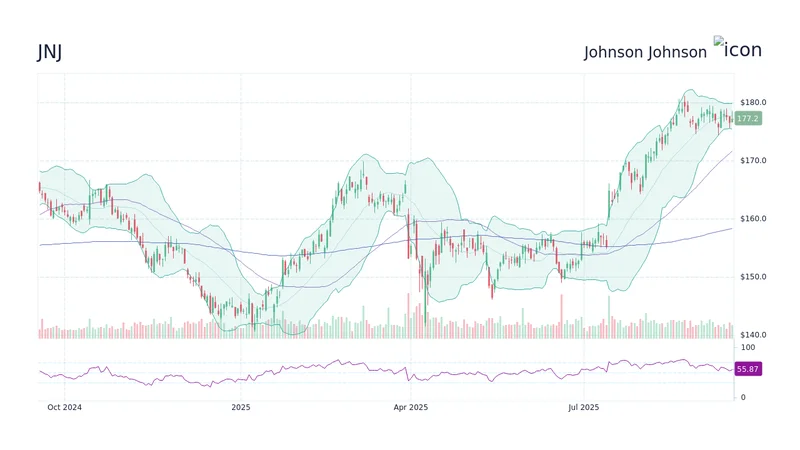The Real Story Behind J&J's Warning Label Isn't Fear. It's the Dawn of Living Medicine.
The markets blinked this week. When the FDA mandated its strictest "black box" warning for Johnson & Johnson's cancer therapy, Carvykti, the headlines wrote themselves—like Johnson & Johnson Stock (JNJ) Falters Ahead of Earnings Release as Cancer Therapy Gets Warning Label—and the stock tickers dipped in predictable, nervous response. The narrative was simple: a promising drug now carries a scary warning about a potentially fatal side effect. It’s a story of risk, of corporate setback, of caution.
And it’s completely the wrong story.
What we're witnessing isn't the failure of a drug, but the breathtaking, messy, and absolutely necessary process of humanity learning to wield a power we've only ever dreamed of: programming our own biology. Looking at this event through the lens of a quarterly stock report is like judging the invention of the airplane by its first crash. You’re missing the point entirely. The real story is that we’ve learned to fly.
From Chemical Sledgehammers to Cellular Scalpels
For the better part of a century, our approach to fighting cancer has been, to put it bluntly, medieval. We’ve used chemotherapy and radiation—essentially, poisons and energy beams. We carpet-bombed the body, hoping to kill the enemy soldiers faster than we killed our own citizens. It was a brutal, destructive war of attrition. When I first read the initial clinical data for this kind of therapy years ago, I honestly just sat back in my chair, speechless. This is the stuff we dreamed about at MIT.
Carvykti represents a paradigm shift so fundamental it’s hard to wrap your head around. This is CAR-T therapy—shorthand for Chimeric Antigen Receptor T-cell therapy, which is just a very scientific way of saying we’re giving our own immune cells a software update. Doctors take your T-cells, the natural-born killers of your immune system, out of your body. In a lab, they genetically re-engineer them, giving them a new targeting system—a new "receptor"—that is custom-built to recognize and hunt down your specific type of cancer, in this case, multiple myeloma. Then they infuse these super-soldiers back into you.

This isn't a drug in a bottle; it's a living medicine. It's a personalized, intelligent, and persistent army. It’s the difference between a chemical sledgehammer and a team of microscopic surgeons. The fact that this is no longer science fiction but a real, FDA-approved treatment is one of the greatest scientific achievements of our lifetime. So when a therapy this potent, this revolutionary, shows a new and serious side effect, my first reaction isn't fear. It's awe. It’s proof of just how powerful this tool really is.
The Price of a Miracle is Vigilance
Let’s be clear: the FDA’s warning is serious. A bacterial infection of the gut that can be fatal is not something to be dismissed. But this isn't a sign that CAR-T is a mistake. It's a sign that we are navigating a completely new frontier of medicine, and on any frontier, you will find unforeseen dangers. We are, in a very real sense, learning to fly the spaceship while we are building it, and sometimes, a warning light flashes on the console. The FDA's own conclusion is the key here: the benefits of Carvykti still far outweigh the risks. For patients with multiple myeloma who have exhausted other options, this therapy remains a profound source of hope.
This process is exactly what a mature, responsible scientific rollout looks like. The fact that we can now take a person’s own cells, essentially teach them in a lab to hunt down a specific cancer that has evaded every other defense, and then reintroduce them as a living, breathing medicine is a paradigm shift so profound it’s hard to overstate—it’s the difference between sending a blind army into battle and deploying a single, perfect special agent. This isn't just a new drug; it's a new category of existence.
This development forces us to ask bigger, more important questions than "What will J&J's stock do tomorrow?" The real questions are: How do we build the infrastructure to safely manage therapies that are alive? As we get better at editing the code of life, what ethical guardrails will we need for powers that can both cure disease and, if misused, alter the very definition of being human? This warning label isn’t a stop sign; it's a crucial piece of data on our map of this new world. It’s a reminder that with god-like power comes an immense responsibility to be vigilant, to learn, and to adapt.
This Isn't a Setback; It's the Sound of Progress
Forget the stock market jitters for a moment. What happened this week is not a story about a corporate stumble. It's a landmark in the story of human ingenuity. We have created a therapy so powerful that its effects on the intricate ecosystem of the human body are still being fully mapped. This warning isn't a failure; it's a discovery. It’s the sound of science working exactly as it should—pushing boundaries, observing outcomes, and refining its approach. We are in the earliest days of personalized, living medicine, and the road ahead will have more of these moments. But don't mistake the necessary course corrections for a sign that we're headed in the wrong direction. We are headed toward a future where "incurable" is a word we use less and less.










